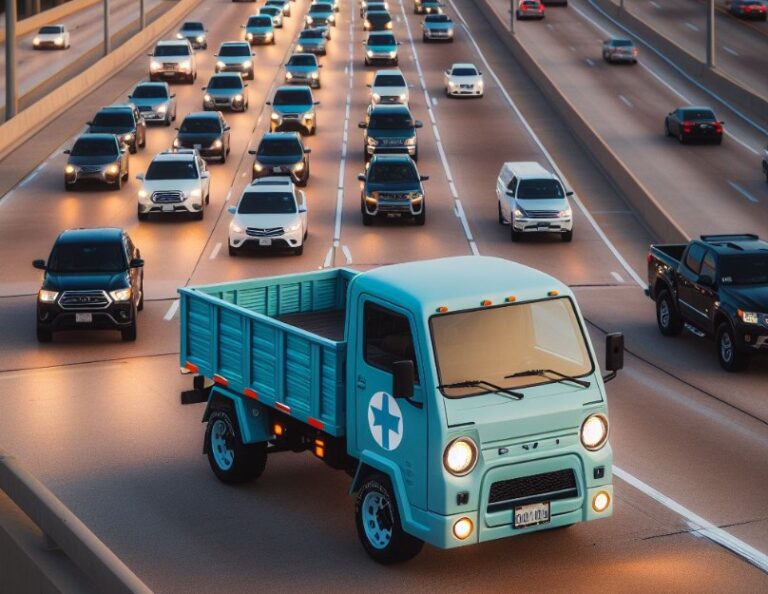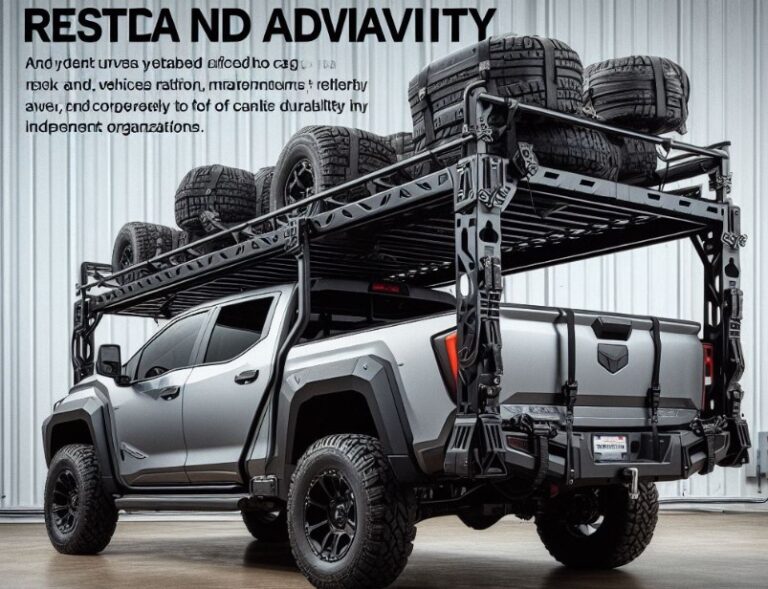Are Baja Trucks 2WD? A Complete Breakdown
In the thrilling world of off-road racing, Baja trucks have become a symbol of rugged capability and high-speed endurance. Often, a question that intrigues enthusiasts and casual observers alike is, Are Baja Trucks 2WD? This article delves deeply into the technical aspects, performance capabilities, and unique characteristics of these formidable racing machines. We aim to provide a comprehensive understanding, satisfying the curiosity of both seasoned experts and newcomers to the off-road racing scene.
Key Takeaways
- Baja trucks are primarily designed for high-speed off-road racing.
- The drive configuration, whether 2WD or 4WD, significantly impacts their performance.
- Technological advancements have influenced the design and functionality of Baja trucks.
- Understanding the differences between 2WD and 4WD Baja trucks is crucial for enthusiasts and participants in off-road racing.
Are Baja Trucks 2WD?
Yes, Baja trucks can be 2WD. However, the specific drive configuration varies depending on the racing category, design preferences, and the specific challenges of each race. The Baja 1000, one of the most famous off-road races, showcases a diverse range of trucks, from 2WD to 4WD, each offering unique advantages.

Two-Wheel Drive Baja Trucks
Characteristics and Performance
Two-wheel drive (2WD) Baja trucks are known for their lightweight design and agility. This configuration often results in faster acceleration and superior handling, especially on courses with a lot of turns or variable terrain. However, they might struggle in extremely rough or slippery conditions compared to their 4WD counterparts.
Advantages in Racing
The 2WD design is often preferred for courses that require high-speed maneuverability and less complex mechanical setups. These trucks are typically easier to maintain and repair, a crucial factor in long-duration races.
Four-Wheel Drive Baja Trucks
Baja trucks with four-wheel drive (4WD) configurations are becoming increasingly popular. This section explores their unique attributes and why some teams prefer them over 2WD trucks.
Enhanced Traction and Stability
The primary advantage of 4WD Baja trucks is their superior traction, which is particularly beneficial on loose or slippery surfaces. This enhanced grip can lead to better overall stability and control, especially in challenging terrains.
Performance in Diverse Conditions
4WD trucks are often the go-to choice for races with a wide range of terrain types. They provide consistent performance across different conditions, which is essential for races like the Baja 1000, where the course can vary dramatically.
Comparing 2WD and 4WD Baja Trucks
When assessing Baja trucks, whether 2WD or 4WD, it’s crucial to consider the specific demands of each race. This comparison provides insights into the strategic choices teams make when preparing for different events.

Speed vs. Control
2WD trucks typically offer higher speeds and better fuel efficiency, while 4WD trucks excel in control and stability. The choice often comes down to the nature of the race course and the driving style of the racer.
Maintenance and Durability
2WD Baja trucks generally have simpler mechanical components, making them easier to repair and maintain. On the other hand, 4WD trucks, with their more complex drivetrains, can be more challenging to service but offer greater durability in rough conditions.
Technical Evolution of Baja Trucks
The world of Baja truck racing is constantly evolving, with technological advancements playing a significant role. This section explores how these changes have impacted the design and capabilities of Baja trucks.
Innovations in Design and Engineering
Recent years have seen significant improvements in suspension systems, engine performance, and materials used in Baja trucks. These advancements have led to faster, more resilient, and more efficient vehicles, regardless of their drive configuration.
Impact on 2WD and 4WD Configurations
Technological progress has narrowed the performance gap between 2WD and 4WD Baja trucks. Modern 4WD systems are lighter and more efficient, while advancements in traction control have enhanced the capabilities of 2WD trucks.
The Future of Baja Truck Racing
Looking ahead, the Baja truck racing scene continues to evolve, with new technologies and strategies emerging regularly. This section speculates on the future direction of these incredible machines.
Potential Technological Breakthroughs
As automotive technology advances, we can expect to see more innovative features integrated into Baja trucks. These may include hybrid powertrains, advanced telemetry systems, and more sophisticated safety features.
The Role of 2WD and 4WD in Future Races
The debate between the superiority of 2WD and 4WD Baja trucks is likely to continue. However, the focus will likely shift towards how best to utilize emerging technologies in each configuration to maximize performance.
How Do 2WD and 4WD Systems Impact Baja Truck Racing Strategies?
Off-road racing strategies differ significantly between two-wheel and four-wheel drive systems. In Baja truck racing, the choice of drivetrain directly influences the racing approach. For 2WD systems, the strategy often revolves around maximizing speed and agility.
These trucks, lighter and more nimble, excel in fast, dry, and less rugged terrains. Drivers can take sharper turns and achieve higher speeds on straight sections. However, they must also be adept at handling potential traction issues, especially on loose surfaces.

In contrast, 4WD Baja trucks require a different tactical approach. Their strength lies in tackling diverse and challenging terrains. Teams using 4WD trucks focus on maintaining consistent speeds across varying conditions, from deep sand to rocky paths.
The strategy here is not just about speed but also about ensuring stability and control. This is crucial in longer races, where maintaining a steady pace can be more beneficial than short bursts of high speed.
The 4WD system’s superior traction gives drivers confidence in adverse conditions, allowing them to navigate obstacles that might hinder a 2WD truck.
What Are the Maintenance Considerations for Baja Trucks?
Maintaining Baja trucks is a critical aspect of off-road racing, significantly impacting the vehicle’s performance and longevity. For 2WD trucks, maintenance often focuses on the suspension, brakes, and engine — components that are pushed to their limits during high-speed maneuvers.
Regular checks and adjustments are necessary to ensure these parts function optimally. Simpler drivetrains in 2WD trucks mean fewer complex parts to manage, which can be a significant advantage in terms of maintenance ease and cost.
On the other hand, 4WD trucks have more intricate systems, including the drivetrain and differential components. These additional parts require thorough and frequent inspections to prevent breakdowns during races. The complexity of 4WD systems means that teams need specialized knowledge and tools to maintain them.
Proper lubrication, alignment checks, and inspections of the transfer case and drive shafts are essential to keep the 4WD system functioning correctly. Despite the increased maintenance needs, the durability and performance advantages of 4WD trucks often make them a worthwhile choice for many racing teams.
How Does the Weight of a Baja Truck Affect Its Performance?
The weight of a Baja truck is a critical factor that influences its performance, particularly in off-road racing. Lighter trucks, typically 2WD, benefit from increased agility and speed.
Their lower weight allows for quicker acceleration and easier handling, especially on tracks with lots of turns or where high-speed maneuverability is crucial. However, a lighter vehicle may also have less traction and stability, particularly on uneven or slippery surfaces.

Conversely, heavier 4WD trucks offer better grip and stability due to their increased weight. This attribute is particularly beneficial on challenging terrains, such as rocky paths or steep inclines, where a firm grip is essential.
The downside of a heavier truck is reduced acceleration and increased fuel consumption. Balancing the weight is therefore a strategic decision for teams, as it influences the truck’s overall performance in different racing conditions.
What Role Does Suspension Play in Baja Trucks?
Suspension systems in Baja trucks are pivotal for off-road performance. In 2WD trucks, the suspension is designed to provide agility and responsiveness. These systems must be able to absorb shocks from uneven terrain while maintaining speed.
The focus is on keeping the vehicle stable and controlled during high-speed runs and sharp turns. Lighter suspension components are often used to reduce overall weight and enhance performance.
In 4WD trucks, the suspension needs to handle not just speed and agility but also the additional weight and the complexities of four-wheel drive. These systems are typically more robust and designed to withstand severe off-road conditions without compromising the vehicle’s stability.
A well-tuned suspension in a 4WD Baja truck can significantly improve traction and control across various terrains, making it a crucial factor for success in off-road racing.
What Are the Key Differences in Tire Choices for 2WD vs. 4WD Baja Trucks?
Tire selection is a critical aspect of preparing Baja trucks for off-road racing, and the choice varies between 2WD and 4WD vehicles. For 2WD trucks, the priority is often on lightweight tires that can enhance speed and provide sufficient traction for rear-wheel drive.
These tires are typically designed for agility and quick response, allowing for sharper turns and better handling at high speeds.

In contrast, 4WD trucks require tires that can handle the additional demands of four-wheel drive. These tires are generally more robust, with deeper treads and stronger sidewalls to provide better grip and durability across diverse terrains.
They are designed to withstand the rigors of off-road conditions, from rocky paths to muddy trails. The choice of tires significantly affects the performance of Baja trucks, making it a key consideration for teams when preparing for races.
Conclusion
In the world of off-road racing, Baja trucks, whether 2WD or 4WD, represent a perfect blend of engineering prowess and driving skill. The choice between 2WD and 4WD depends on various factors, including the race course, driving style, and technological advancements.
As the sport continues to evolve, so too will the capabilities and strategies surrounding these remarkable vehicles. The ongoing evolution promises an exciting future for Baja truck racing enthusiasts.
People Also Ask
What is the average weight of a Baja Truck?
The average weight of a Baja Truck ranges from 3,500 to 6,000 pounds. The weight is influenced by the truck’s size, the materials used in its construction, and its engine type. 2WD trucks are generally lighter than 4WD trucks due to the simpler drivetrain and fewer components.
Are there specific tires for 2WD and 4WD Baja Trucks?
Yes, tire choices for 2WD and 4WD Baja Trucks differ. 2WD trucks often use lighter, more agile tires for speed and maneuverability, while 4WD trucks require sturdier tires with deeper treads for better traction across varied terrains.
How long does it take to build a Baja Truck?
Building a Baja Truck can take anywhere from several months to a year, depending on the level of customization and the resources available. Professional teams with more resources can build or modify trucks more quickly than smaller, independent racers.
What safety features are standard in Baja Trucks?
Standard safety features in Baja Trucks include roll cages, racing harnesses, fire extinguishers, and impact-absorbent seats. Given the extreme conditions of off-road racing, these trucks are equipped with advanced safety systems to protect the driver.

Welcome to the exhilarating world of Matt Rex, a professional car racer turned renowned vehicle enthusiast. Immerse yourself in his captivating blog as he shares heart-pounding adventures, expert reviews, and valuable insights on cars, trucks, jets, and more. Fuel your passion for speed and discover the beauty of vehicles through Matt’s engaging stories and meticulous expertise. Join the ever-growing community of enthusiasts who find inspiration and expert advice in Matt Rex’s blog—a digital hub where the thrill of speed meets the pursuit of knowledge.







